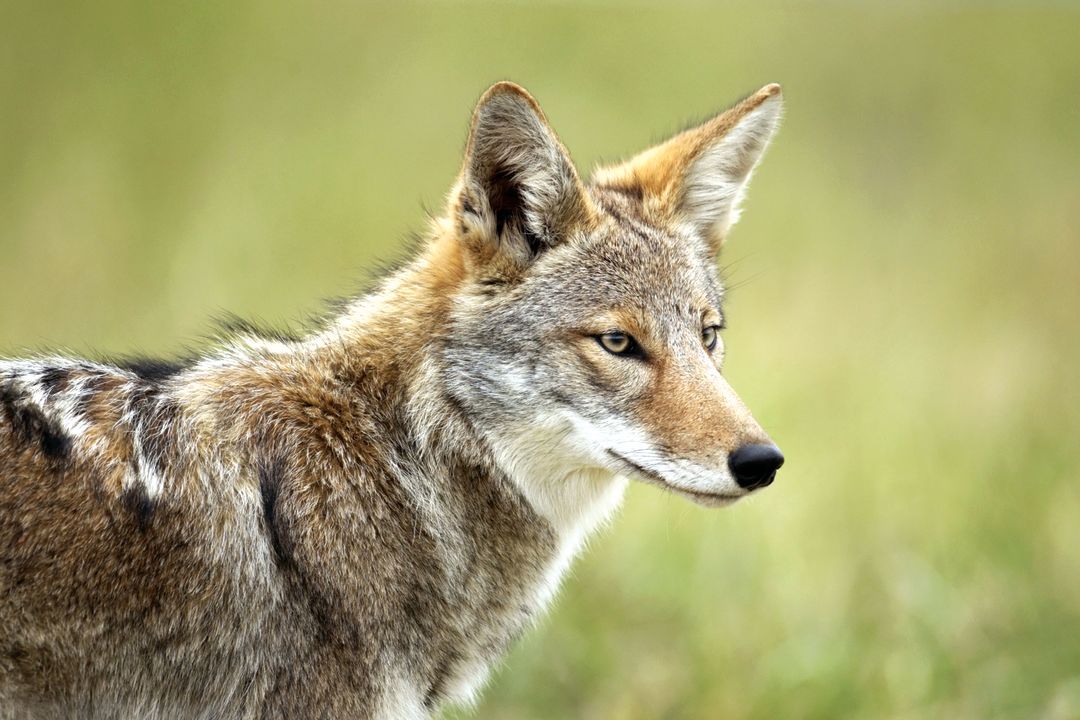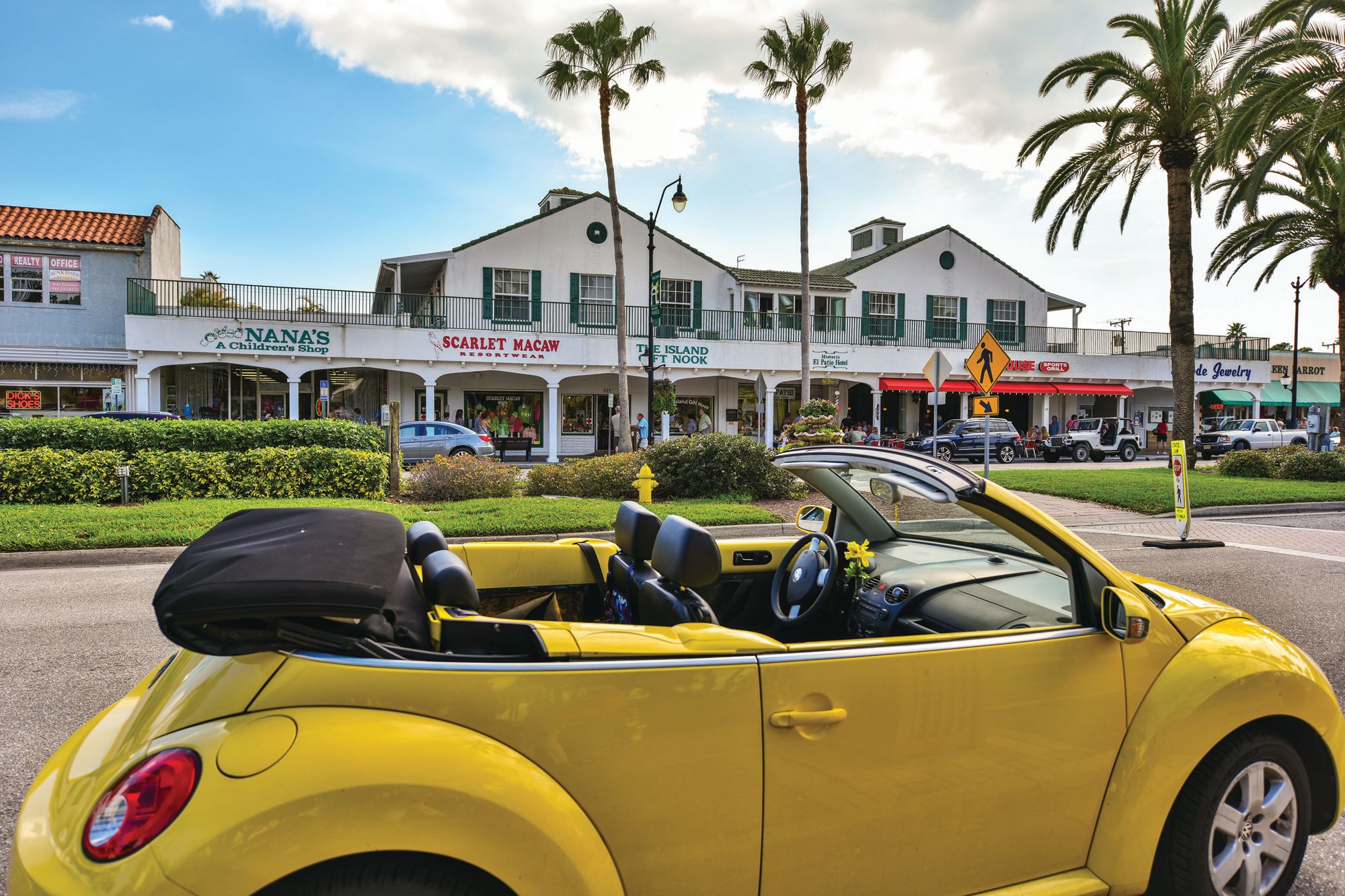After Nearly 12,000 Years, Coyotes Return to Florida—and Sarasota

Image: Shutterstock
When mange-stricken coyotes began wandering the streets and yards on Venice island last summer, something close to hysteria took hold. Some residents wanted to put bowls of food out for the animals, whose eyes had become so damaged by the mange, a skin disease caused by parasites, that they could not hunt at night. Others, fearing packs of coyotes would attack pets and people, suggested shooting them. A town meeting at City Hall in September brought out nearly 250 residents.
Venice is hardly unique. Whenever a police siren sounds in the McIntosh Meadows Community near Fruitville Road in Sarasota, coyotes in the nearby woods howl their refrain. “Like clockwork, you can count on it,” says homeowner Joe Sipos. “They can keep it up for 10 or 15 minutes, especially when the mothers have young pups. It’s been going on for six or seven years. We’ve learned to live with it.”
In American lore, coyotes are known for baying at the moon on Western prairies and filling the lyrics of campfire songs by lonely cowboys. But after a nearly 12,000-year absence, the resourceful animals have once again found a home in Florida. They began appearing in the Panhandle in the 1970s, were first spotted in Sarasota County in 1997 and are now so established in all of Florida’s 67 counties that the state has declared them to be “naturalized,” meaning that they have become a part of the ecosystem.
No one is sure how many coyotes are in Sarasota or in Florida. But Kevin Barton, director of the Wildlife Center of Venice, is sure of one thing: “They are here to stay. They are amazingly adaptive animals that have adjusted to living in urban areas.” Coyotes are have been spotted stalking tractors across big public fields like the grounds of Venice Municipal Airport, pouncing on rabbits stirred up by the mowers.
“There’s still a fear of coyotes among many people, but I think those fears are misguided,” Barton says. “I’m not aware of a single case of coyotes attacking people in Florida. They’re actually very smart and submissive when you get your hands on them, as I do.”
Unlike invasive animals such as Burmese pythons and lionfish, which threaten native species and habitats, Barton believes coyotes are benefiting wildlife and the environment in Florida, just as the gray wolf has done in the West. In 1995, the gray wolf was reintroduced into Yellowstone Park after a 70-year absence to help contain the growing elk population. Scientists found that wolves produced a chain reaction of unforeseen benefits to other wildlife that even boosted the park’s rivers and forests.
“It’s pretty clear coyotes are helping to restore our natural systems,” Barton says. That includes eating rodents and rabbits—but also feral and even domestic cats, which is alarming to cat owners but less so to those who worry about the effect cats have on the environment.
“I love cats,” Barton says. “But feral cats decimate wildlife. That’s just a fact. It’s not cats’ fault. It’s people's fault.”
Cats kill up to 4 billion birds and 20 billion mammals each year in the United States, according to a 2013 joint study by the Smithsonian’s Conservation Biology Institute and the U.S. Fish and Wildlife Service. The Florida Wildlife Commission estimates that there are as many as 12 million feral cats in the state, some in colonies of up to 1,000. They kill 31 million small mammals and 68 million birds a year, including threatened species such as the Florida scrub jay and the Lower Keys marsh rabbit.
People unwittingly abet the proliferation of feral cats by putting out feed bowls. Barton says that coyotes quickly learn to find the bowls, and when they are not available, “They help themselves to the cats.”
Shelley Thayer, executive director of the Cat Depot rescue and adoption center, says she has heard more talk recently about coyotes killing cats, but Thayer says bobcats, owls and other predators are also a threat. Keeping cats indoors is the best protection, she says.
“When people leave their pets unattended in the food chain, they become part of the food chain,” adds Barton. “A few years ago, raising backyard chickens was all the rage. But people didn’t understand the importance of building chicken coops to protect your chickens.”
Coyotes make dens in culverts and hollowed logs. The biggest ones can reach 45 pounds. But they have also had their own threats to overcome, including the recent outbreak of mange. Even when they are near death, coyotes remain elusive, darting to their feet and fleeing when wildlife specialists like Barton try to grab them for treatment.
Startled to find a coyote living in the bushes next to her home on Venice island, Janice Stevenson heard so much conflicting advice about how to respond that she sought out an expert. In September, she invited state wildlife biologist Angeline Scotten to the forum at that packed City Hall.
“What I learned is that mange is just nature’s way of thinning the herd,” Stevenson says. “Coyotes are here to stay, and we’re going to need to live with them. Seeing a coyote, even in cities, is going to be as common around here as seeing a raccoon or a possum.”
Coyote Close-up
Coyote fossils have been found in Florida dating from 2.6 million to 11,700 years ago.
The red wolf kept coyotes from migrating east of the Mississippi until the 20th century. When the wolf population was decimated by humans, coyotes moved into every state.
There are between .2 and 1.2 coyotes per square mile in Florida—a total of between 13,000 and 70,000.
Adult coyotes weigh between 18 and 45 pounds. They hunt at night and can travel 2.5 miles in search of food. Their average litter is four to six pups. They can breed with wolves and dogs.
Coyotes are among the fastest mammals in North America, capable of running up to 50 mph.
Source: Anamar Environmental Consulting Inc., Gainesville

